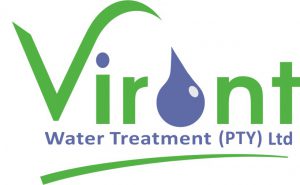Other Disinfection Methods
Although chlorination is still the most extensively used disinfection method employed today various alternative disinfectants are also being used, many in conjunction with chlorination, such as ozone and ultraviolet radiation. The advantages and disadvantages of the various disinfection methods are indicated below.
Chlorine-Based Alternative Disinfectants
Chloramines
Chloramines are formed by combining chlorine and ammonia in a specific ratio in water. Chloramines are relatively weak as a disinfectant and therefore almost never used as a primary disinfectant but can provide a durable residual and are often used as a secondary disinfectant for long distribution lines and where free chlorine demand is high. Chloramines may also be used instead of chlorine in order to reduce chlorinated byproduct formation and to remove some taste and odour problems.
- Reduced formation of THMs, HAAs
- Will not oxidize bromide to bromine forming brominated byproducts
- More stable residual than free chlorine
- Excellent secondary disinfectant that has been found to be better than free chlorine at controlling coliform bacteria and slime
- Improved taste and odours than free chlorine
- Weak disinfectant and oxidant
- Requires shipment and handling of ammonia or ammonia compounds as well as chlorinating chemicals
- Ammonia is toxic to fish, and may pose problems for aquarium owners
- Will cause problems for kidney dialysis if not removed from water
Chlorine Dioxide
Chlorine dioxide (ClO2) is generated on-site at water treatment facilities whereby sodium chlorite and elemental chlorine are mixed in solution, instantaneously forming chlorine dioxide. The characteristics of chlorine dioxide are quite different from chlorine in that in solution it is a dissolved gas which makes it largely unaffected by pH but volatile and relatively easily stripped from the solution. Chlorine dioxide is also a strong disinfectant and a selective oxidant and although chlorine dioxide does produce a residual it is only rarely used for this purpose.
- Effective against Cryptosporidium
- Up to five times faster than chlorine at inactivating Giardia
- Disinfection is only moderately affected by pH
- Will not form chlorinated byproducts (THMs, HAAs)
- Does not oxidize bromide to bromine (can form bromate in sunlight)
- More effective than chlorine in treating some taste and odour problems
- Selective oxidant used for manganese oxidation and targeting some chlorine resistant organics
- Inorganic byproduct formation (chlorite, chlorate)
- Highly volatile residuals
- Requires on-site generation equipment and handling of chemicals (chlorine and sodium chlorite)
- Requires a high level of technical competence to operate and monitoring equipment, product and residuals
- Occasionally poses unique odour and taste problems
- High operating cost (chlorite chemical cost is high)
Ozone
Ozone (O3) is generated on-site at water treatment facilities by passing dry oxygen or air through a system of high voltage electrodes. Ozone is one of the strongest oxidants and disinfectants available but its high reactivity and low solubility makes it difficult to apply and control. Contact chambers are fully contained and non-absorbed ozone must be destroyed prior to release to avoid corrosive and toxic conditions. Ozone is more often applied for oxidation rather than disinfection purposes.
- Strongest oxidant/disinfectant available
- Produces no chlorinated THMs, HAAs
- Effective against Cryptosporidium at higher concentrations
- Used with Advanced Oxidation processes to oxidize refractory organic compounds
- Process operation and maintenance requires a high level of technical competence
- Provides no protective residual
- Forms brominated byproducts (bromate, brominated organics)
- Forms non-halogenated byproducts (ketenes, organic acids, aldehydes)
- Breaks down more complex organic matter, resulting in microbial re-growth and DBP formation
- Higher operating and capital costs than chlorination
- Difficult to control and monitor, particularly under variable load conditions
Ultraviolet Radiation
Ultraviolet (UV) radiation is generated by mercury arc lamps. UV radiation destroys organisms by penetrating the cell wall where it damages genetic material, preventing the cell from reproducing. UV is gaining in popularity as a means of non-chemical disinfection with some major cities beginning to use it as it effectively inactivates many pathogens but does not form the disinfection byproducts of chemical treatment methods. A major drawback of UV radiation, however is that it provides no residual disinfection for keeping treated water clean at the end points of the distribution network.
- Effective at inactivating most viruses, spores and cysts
- No chemical generation, storage, or handling
- Effective against Cryptosporidium
- No known byproducts at a level that would cause health concerns
- No residual protection
- Low inactivation of some viruses (retroviruses and rotaviruses)
- Difficult to monitor efficacy
- Irradiated organisms can sometimes repair and reverse the destructive effects of UV through a process known as photo-reactivation
- May require additional treatment steps to maintain high-clarity water
- Does not provide oxidation, or taste and odour control
- High cost of adding backup/emergency capacity
- Mercury lamps may pose a potable water and environmental toxicity risk
An adequate supply of clean water, sanitation and hygiene are the most important preconditions for sustaining human life, for maintaining ecological systems that support all life and for achieving sustainable development.
African Ministerial Declaration at the International Conference on Freshwater, December 2001
